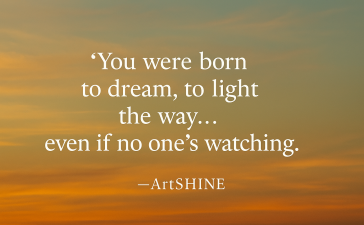Graphic designers possess a unique combination of skills and qualities that make them well-suited for a successful transition into the art licensing world. With their expertise in creating visually compelling designs, understanding of commercial needs, and ability to adapt to market trends, they can leverage their abilities to carve out a niche in this exciting industry.
Why Graphic Designers Are Well-Suited for Art Licensing
The art licensing industry is all about creating designs that can be applied to products such as textiles, stationery, home decor, and apparel. The goal is to meet the demands of the commercial market while maintaining a strong artistic identity. Graphic designers, with their experience in producing high-quality work for clients, have the foundational skills to excel in this field.
Below are some reasons why graphic designers make ideal candidates for art licensing:
Key Qualities of Graphic Designers That Align With Art Licensing
1 Proficiency in Design Software
Graphic designers are adept at using tools such as Adobe Photoshop, Illustrator, and InDesign. These programs are essential for creating seamless patterns, typography-based designs, and mockups that are key in art licensing. Skill with layers, color adjustments, and vector artwork ensures their designs are versatile and ready for adaptation to different products.
2. Understanding of Commercial Design
Designers are trained to create work that appeals to specific audiences. They know how to balance creativity with marketability, a critical requirement in art licensing.
Their ability to analyze trends and adapt their designs to align with consumer preferences provides an edge in the licensing world.
3. Ability to Read and Execute Briefs
Graphic designers excel at interpreting client briefs, ensuring their work aligns with the desired outcomes. This ability translates well into art licensing, where meeting the needs of manufacturers and brands is vital.
4. Deadline Management
Having worked in fast-paced environments, designers are skilled at meeting tight deadlines without compromising quality. This efficiency is crucial in art licensing, where timely submissions can make or break opportunities.
5. Eye for Detail
Attention to detail in typography, colour theory, and layout ensures their designs are polished and professional—qualities that resonate in the competitive art licensing market.
6. Experience in Collaboration
Designers are accustomed to working in teams and collaborating with clients, printers, and other stakeholders. This makes them well-equipped to work with licensing managers, manufacturers, and retailers.
7. Portfolio of Work
Most graphic designers have a robust portfolio showcasing diverse styles and projects. This existing body of work can serve as a foundation for building a licensing portfolio.
How Graphic Designers Can Transition to Art Licensing
While graphic designers have many transferable skills, entering the art licensing world requires a strategic approach. Here’s a roadmap for making the transition:
Build a Licensing Portfolio
Unlike a traditional design portfolio, a licensing portfolio should showcase patterns, repeat designs, and artworks that can be applied to products. Highlight versatility by including designs suitable for different categories, such as fashion, home goods, or stationery.
Understand Licensing Agreements
Study the basics of art licensing contracts, including royalties, flat fees, and exclusive versus non-exclusive agreements. This knowledge is essential for negotiating fair terms.
Develop a Signature Style, Your ‘Quirks.‘
While versatility is important, having a recognisable style can make your work stand out to licensees, art directors, and manufacturers.
Create Mockups
Use your graphic design skills to create product mockups that show how your designs would look on real-world items. This helps potential clients visualize the potential of your artwork. Network in the Industry
Attend trade shows such as the Licensing Expo or Pattern Lab @ Maison&Object, and join art licensing communities online. Building relationships with licensing agents and manufacturers can open doors to opportunities.
Case Studies: Graphic Designers Who Found Success in Art Licensing
Case Study 1: From Freelance Designer to Licensing Artist
A freelance graphic designer specializing in typography noticed a growing demand for motivational quotes on home decor items. By adapting her lettering designs into seamless patterns and mockups for mugs, tote bags, and wall art, she successfully pitched her work to a licensing agency. Within two years, her designs were featured in major retailers, earning her steady royalties.
Key Takeaway: Use your existing strengths, such as typography or digital illustration, to create designs that resonate with current market trends.
Case Study 2: Leveraging Corporate Experience
A senior graphic designer with a background in corporate branding transitioned into art licensing by repurposing her brand pattern work into designs for textiles. Her experience working with client briefs helped her create designs that appealed to manufacturers of children’s apparel. Partnering with a licensing manager, she expanded her reach and gained several lucrative licensing deals.
Key Takeaway: Your experience in creating commercial designs can be repurposed for different industries, making the transition smoother.
Case Study 3: Illustrator-Turned-Licensing Artist
An illustrator with a background in graphic design began experimenting with surface design after attending a workshop on art licensing. Using her Photoshop skills, she developed a portfolio of whimsical patterns for gift wrap and stationery. After attending her first trade show, she secured multiple licensing deals and now earns most of her income through royalties.
Key Takeaway: Invest time in learning about the art licensing industry and refine your portfolio to align with its demands.
Challenges and How to Overcome Them
Transitioning to art licensing isn’t without challenges. Here’s how graphic designers can address common obstacles:
Challenge: Understanding the Licensing Business
Solution: Educate yourself through books, online courses, or workshops. Partnering with a licensing agent can also help.
Challenge: Building a Portfolio from Scratch
Solution: Dedicate time to creating patterns and mockups demonstrating your ability to meet industry standards.
Challenge: Rejections
Solution: Persistence is key. Rejections are a natural part of the journey in art licensing and should not be taken personally. Each rejection is an opportunity to refine your work and align it better with market demands. Working with an art licensing coach can fast-track your progress by offering expert guidance, constructive feedback, and industry insights. Coaches often have established relationships with licensees and can represent your portfolio, ensuring your work reaches the right clients who are more likely to resonate with your style. This strategic approach increases your chances of success while allowing you to focus on your creativity.
Conclusion: A Natural Fit
Graphic designers are uniquely positioned to thrive in the art licensing world. With their technical skills, commercial mindset, and ability to deliver under pressure, they can create marketable art that appeals to manufacturers and consumers alike. By building a focused portfolio, understanding licensing agreements, and leveraging their design experience, graphic designers can transition into this industry and unlock new revenue streams.
Art licensing offers an exciting opportunity for graphic designers to combine creativity with commerce, making it a natural next step for those ready to expand their horizons.
- Find out more
- Launch Pad + Accelerator Expressions of Interest
- Selling and Licensing Your Art & Designs Around the World with ArtSHINE.
- Looking for exciting new Art and Designs to license.
We’re here to help you to take action, just like we’ve helped thousands of other entrepreneurs, business owners, and creative professionals all around the globe.
Now is the time to let your passion SHINE.
Now is the time to Make Tomorrow Today!
To your success, Vinh Van Lam and Stuart Horrex Cofounders ArtSHINE.com





